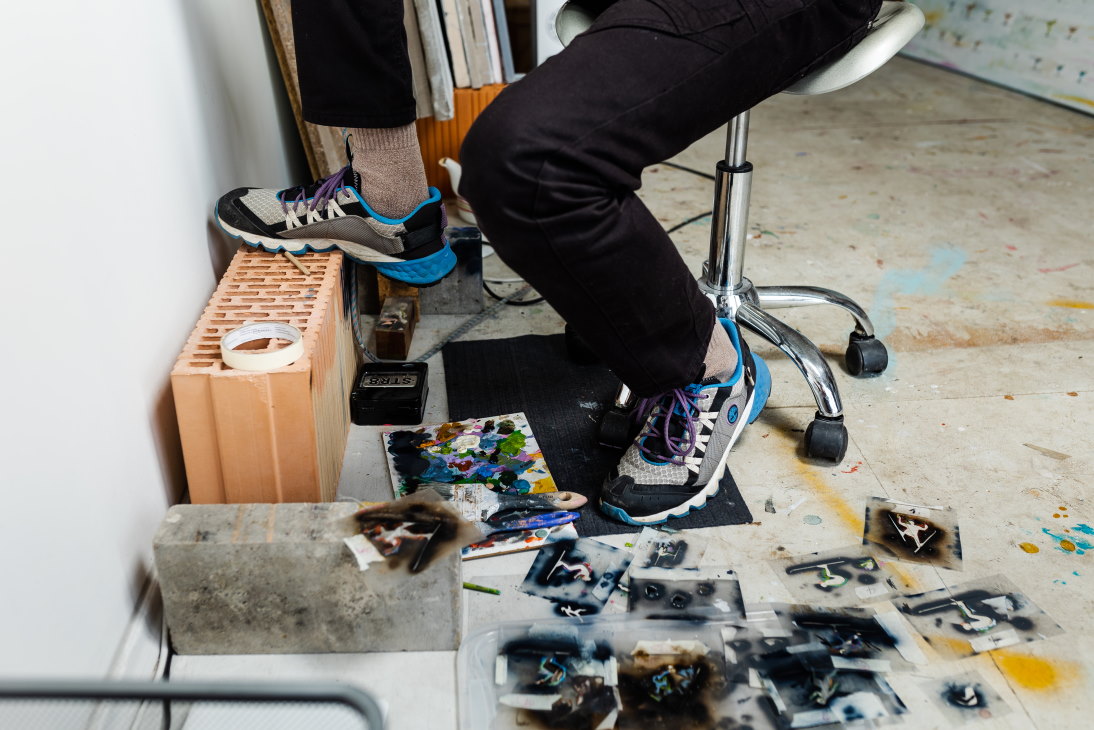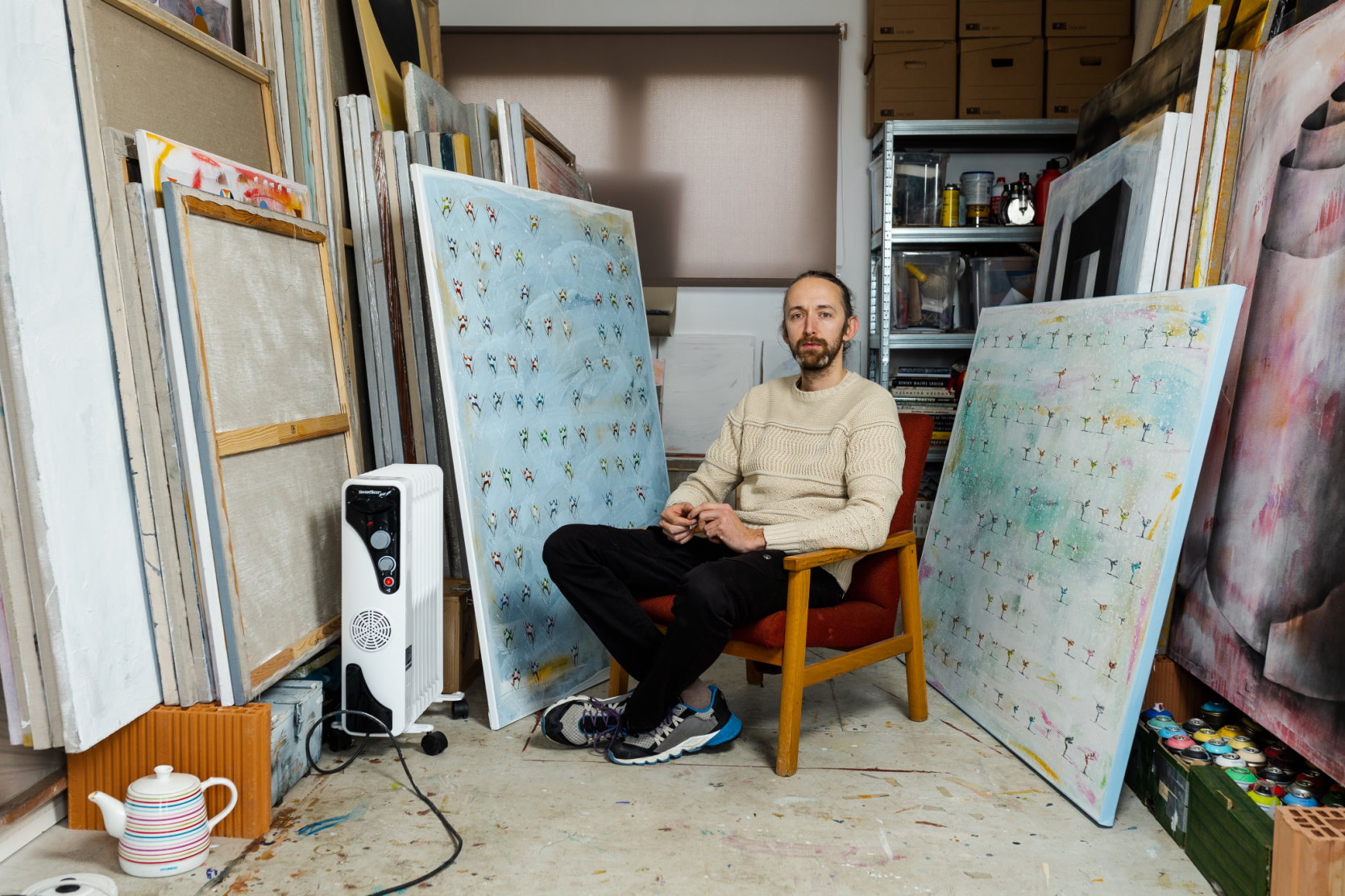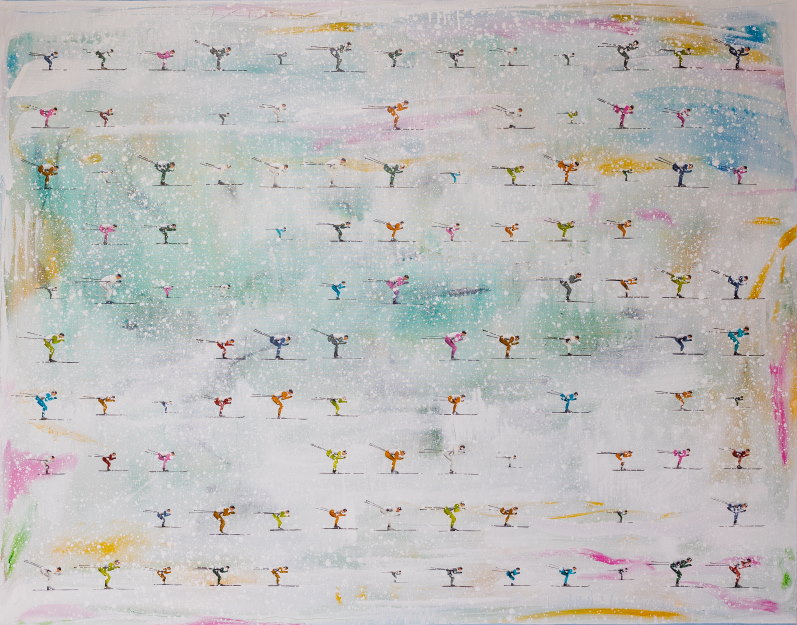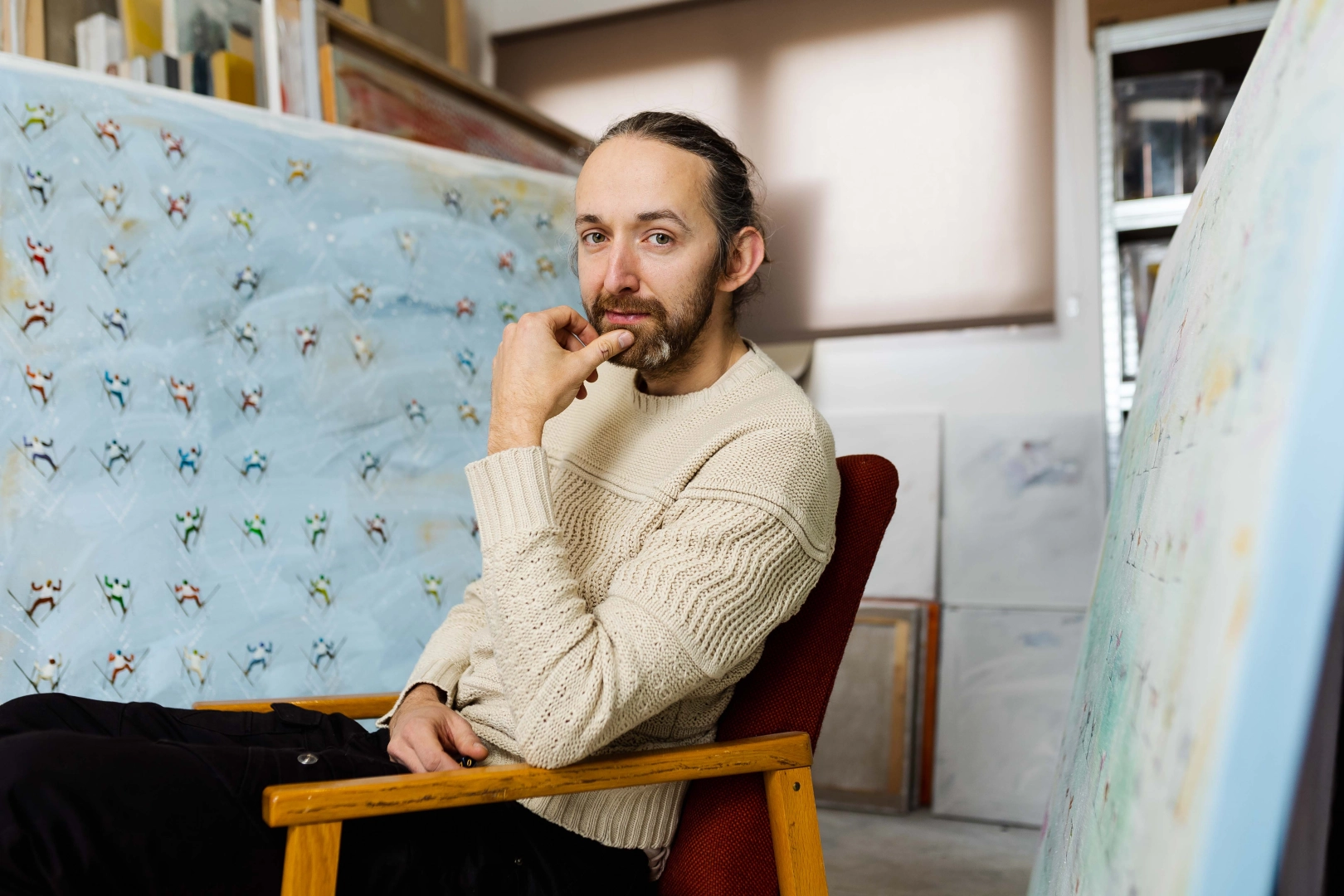Contemporary visual artist David Mazanec arrived to see the Jizerska 50 at the moment when the winners of the longest race were just finishing knocking the heavy snow off their skis. The atmosphere inspired this native of the Jizerské Mountains so much that he decided to respond to it in his work by creating three unique paintings. David Mazanec's work is characterized mainly by large-format canvases on which we find geometric figures following a precise rhythm and order. He has taken the same approach with his most recent works tied to the Jizerská 50 Ski Race. How did the artist manage to capture this year's race? We talked about this and many other things in his studio in Kolovraty, Prague.

You build up your canvases through layering. Have you always done it like this or did you work your way up to it gradually?
I came to the concept of two layers at the end of my studies, ten years ago. That's when the first paintings were created, in which I work on the symbiosis of opposites - for example, imaginary chaos and order.
Where do you look for inspiration? What fascinates you?
I am inspired by seemingly ordinary things that everyone would think would no longer surprise them. I think even a crumpled piece of paper can inspire me. It appears, thrown haphazardly on the table, the sun shines on it and the long shadow looks like a cypress tree. Otherwise, my range of fascination is from colourful toy fragments laying in the kids’ playground sandbox to imagining the vastness of the universe.

Do you follow any rituals when you work?
As far as rituals go, I guess there are a few things that I see repeated during my process that could be (maybe with a bit of irony) called a ritual. I always like to sit in my armchair, look into the studio and think before I start working. As a way of getting my mind ready.
Your works contain a certain rhythm. Is it important to you elsewhere in your life?
Yes, the theme of repetition and rhythm are very common in my work. There's movement and there's time in it. And movement and time mean life. Otherwise, in terms of rhythm in everyday life, sinus rhythm is good. At least some.
The last time we saw each other, you were talking about ecstatic dance when you move and let yourself be completely carried away by the rhythm. Describe how it makes you feel and why you like it.
Ecstatic dance was an interesting discovery in my life. Simple rules. No socializing. boosters like alcohol and drugs. No judging and evaluating others. And no talking when you dance. The closest thing it has to a ritual dance around a fire. Of course, getting in the right frame of mind takes time. For that reason, there is often a guided introduction, which consists of maybe a few exercises and a light confrontation with the other participants. This is followed by dancing. Freedom of movement, in response to music, that grows and builds in various ways. Try three hours of intense movement and one leaves with a clear head.

Speaking of physical exercise, do you play sports? Do you think it's important in life to have a certain discipline?
I've always loved sports and movement. Not because of the super performance I would deliver, but rather because of the super experience I would have. Five years ago, I had a baby, so I froze up a bit and cut back on sports. Now I'm about to make a big comeback, of course, I'd hate to be a loser right in front of my daughter.
The sports theme is present throughout your work. We see runners, wrestlers, people bowling, swimming in spirals, rowing... You've already collaborated with us on the ROW ROW ROW exhibition, where you made an artistic response to rowing. Now, new three works have been created in response to the Jizerská 50 Ski Race. In what ways did you work with the theme? How close are you to skiing and cross-country skiing?
The theme of cross-country skiing was a strong one for me. After analyzing the visual and content possibilities of the sport, I was most interested in the association of colourful herds moving through the landscape. Each in its own colour, with its own story and its own motivation. They huddle together, spend the day together and dissolve again into the sea of the world. I certainly have a connection to skiing, but I also have to admit that there is room to expand on it. Otherwise, as far as the disciplines are concerned, downhill I have mastered, and cross-country skiing is still waiting for its peak day.
You usually paint large canvases, but you are not afraid to tackle much larger formats, such as the giant mural Plav! in Hostivař in Prague, where you work with cyclicality and symbols. Symbols appear quite often in your work. The spectator has the feeling that they should decipher your paintings like a secret code. Is that your intention?
Symbols and metaphors are an integral part of my work. Without going beyond mere depiction, it would undoubtedly be quite shallow. The feeling that my paintings can be deciphered correlates with the fact that all things that surround us have meanings, stories, and functions, and those too are partially hidden and encrypted.

You studied in Ostrava in the painting atelier Malba I. under Prof. Daniel Balabán. Didn't you want to stay there? Did you prefer Prague, which has more potential for your profession?
I freely followed the circumstances. I gave little to any thought to where and how I would end up. In Ostrava, I studied together with my partner, she studied sculpture, and I studied painting. The fact that she is originally from Prague made it an option. It was also more convenient for me to be closer to Železný Brod, where I have roots, a second studio and where I sometimes go to take a mental break and rest.
Can you tell us more about what you are planning now?
I'm going to Portugal for an art residency. There I plan to try and think about the possibilities of some current concepts and sketches I have, outside of the residency programme, of course.

The paintings can be found under THIS LINK.
David Mazanec (*1988) is a graduate of the Faculty of Arts of the University of Ostrava where he studied under Professor Daniel Balabán. His work is characterised mainly by large-format canvases filled with geometric figures that follow a clear rhythm and order, which can resemble codes in an encrypted message while the abstract backgrounds of the paintings act as a contrast. David Mazanec's paintings always work with an active imagination, movement, situational action and colour. He has exhibited both locally and abroad.




